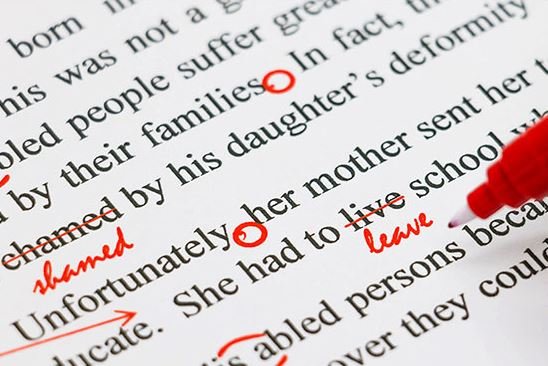With the arrival of artificial intelligence (AI), technology has made way in the daily tasks of a professional writer. In fact, it has been reported that more than 80% of companies intend to use writing bots and chatbots by 2020!

So, if you’re working as a professional writer, now is the ideal time to invest in artificial intelligence courses to obtain the maximum advantage in writing brought about by innovations in AI.
From correcting grammar errors to analyzing the literary quality of a piece, AI will help sharpen your content creation by the following methods.
Plagiarism Detection
The problem of plagiarism is frequently considered as a major obstacle in the writing community around the world. It is the act of using someone else’s texts or documents and presenting it as your own without giving credits to the actual writer.
Plagiarised work can hurt a writer’s reputation and could possibly damage their professional career. Thus, avoiding plagiarism is an important task for all kinds of writers (particularly those who write content online).
With the help of AI, a professional writer can analyse text to ascertain whether it has been copied or not. Tools such as Plagarisma and DupliChecker use metrics and algorithms to estimate whether a text has been copied by recognising the repetition of the words and sentences in a text.
Moreover, an AI-based application called Emma Identity is the world’s first web application which can discover the origin of a particular work based on an individual’s writing method.
Automatic Proofreading
Does your content have wordy sentences? Are the paragraphs too long to understand? How many sentences include passive voice?

If you’re struggling to find out the answers to the above-mentioned question, then AI has answered all of them! Whatever you wish to write, it’s likely that AI will become an important element of your writing experience. AI-enabled softwares help writers proofread their work and also detect spelling and grammar errors and automatically correct them.
Advanced editor feature in Microsoft Word has a solid understanding of context, and it provides more than simplistic proofreading. It can also recognise writing issues and flags complex and overused words. Online writing tools such as Grammarly allows you to correct punctuation, spelling, sentence structure, and of course, grammar!
Other AI tools such as HemingwayApp and Yoast utilise a scoring system to examine the quality of your content, by evaluating the readability score of your content.
Easy Scanning Process
Being a professional writer, you need to compose a great piece of text that is technically sound and readable. To achieve this, you first need to read a good number of documents and articles. Now, the difficulty lies in finding the best material in a gigantic pool of information, which may require additional time and effort.
But with AI-based algorithms such as Summarizer, you can easily summarise and scan long texts and save time. Such tools help you get the gist of the content, so you don’t need to scan them. Another tool named Acrolinx uses AI to interpret content to maximise the impact of the text on the readers.
It compares the text against the expected standards for spelling, grammar, tone, and style to develop the content. Considering that it helps professional writers to make their content accurate, writers can resolve challenging language problems and effectively interact with their readers.
Content Generation
The Washington Post utilised an AI reporter names Heliograf to draft almost 300 reports from the Rio Olympics in 2016! The next year, the publication used it to compose around 850 other reports, which generated more than 500,000 clicks! All of this was done with the help of AI technology.

Some companies also use Natural Language Generation (NLG) and Natural Language Processing (NLP) which are AI-based technologies that produce content automatically. For instance, Yahoo employs an AI tool that produces automated game recaps and draft reports.
However, these events don’t imply that professional writers should worry about their livelihood. In fact, automating content should be a reason for celebration! With the assistance of AI, a professional writer can perform his/her work easier and faster.
After the content is generated through automation, it is the responsibility of the writer to edit and analyse the work and give the precise meaning and remove the redundant information.
With the existing information generated by AI, a writer will have extra time to concentrate on critical points such as how the article is structured and how the context is explained to leave the best impression on the reader.
The major difference between AI-generated content and a professional writer’s content is that the former provides short-description about data-oriented reports and product descriptions.
Whereas, the latter provides a meaningful explanation for a particular subject. For instance, AI tools might be able to draft a brief summary of a novel, but it would struggle to draw a parallel between symbolism in work with another novel.
The world is rapidly approaching a workplace wherein writing professionals interact more with computers instead of people on a regular basis.
The use of AI presents endless possibilities for transforming the lives of professional writers on the internet. It can be practised to compare content and data, thereby helping professional writers to advance their content to optimal levels.